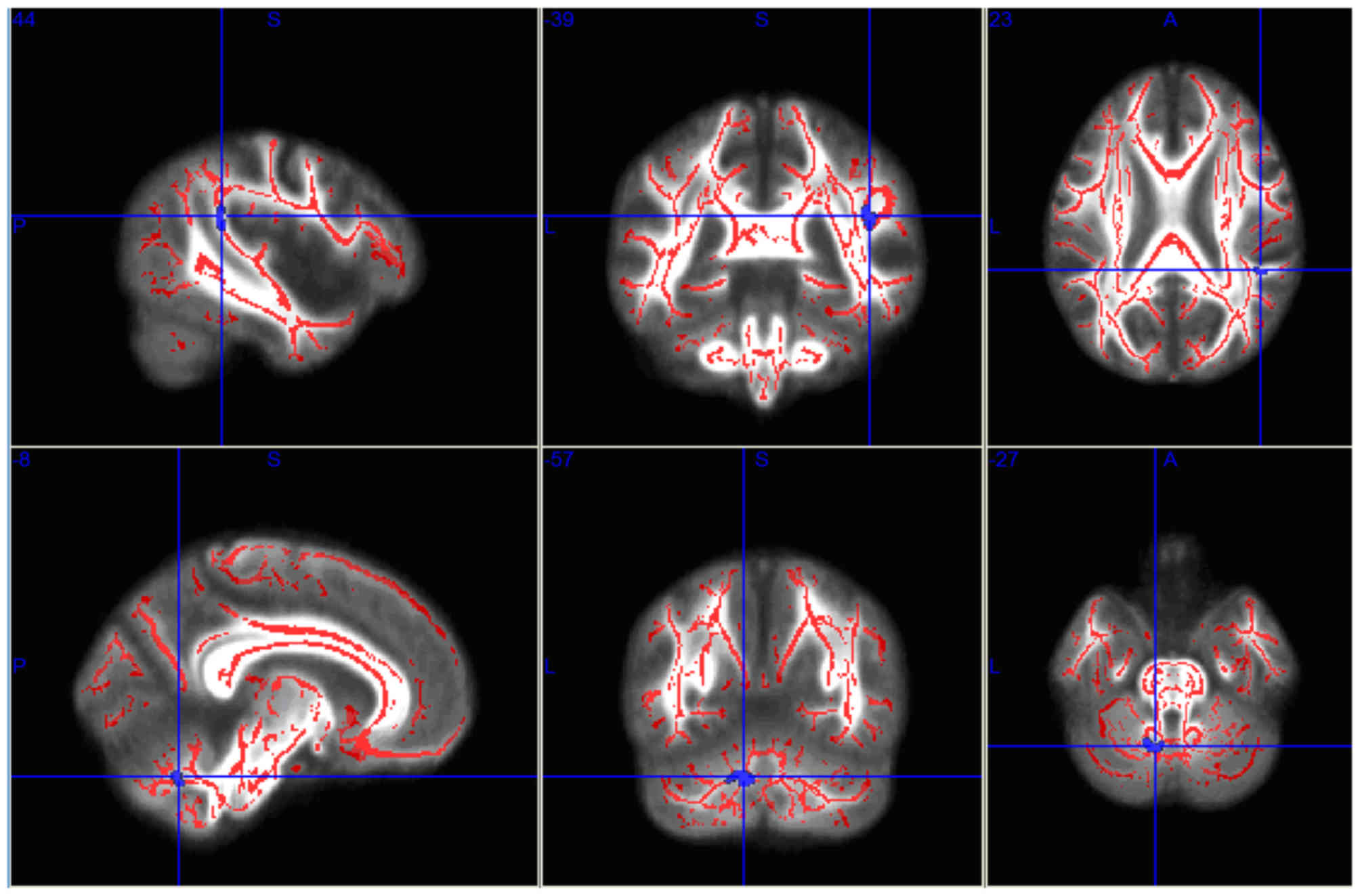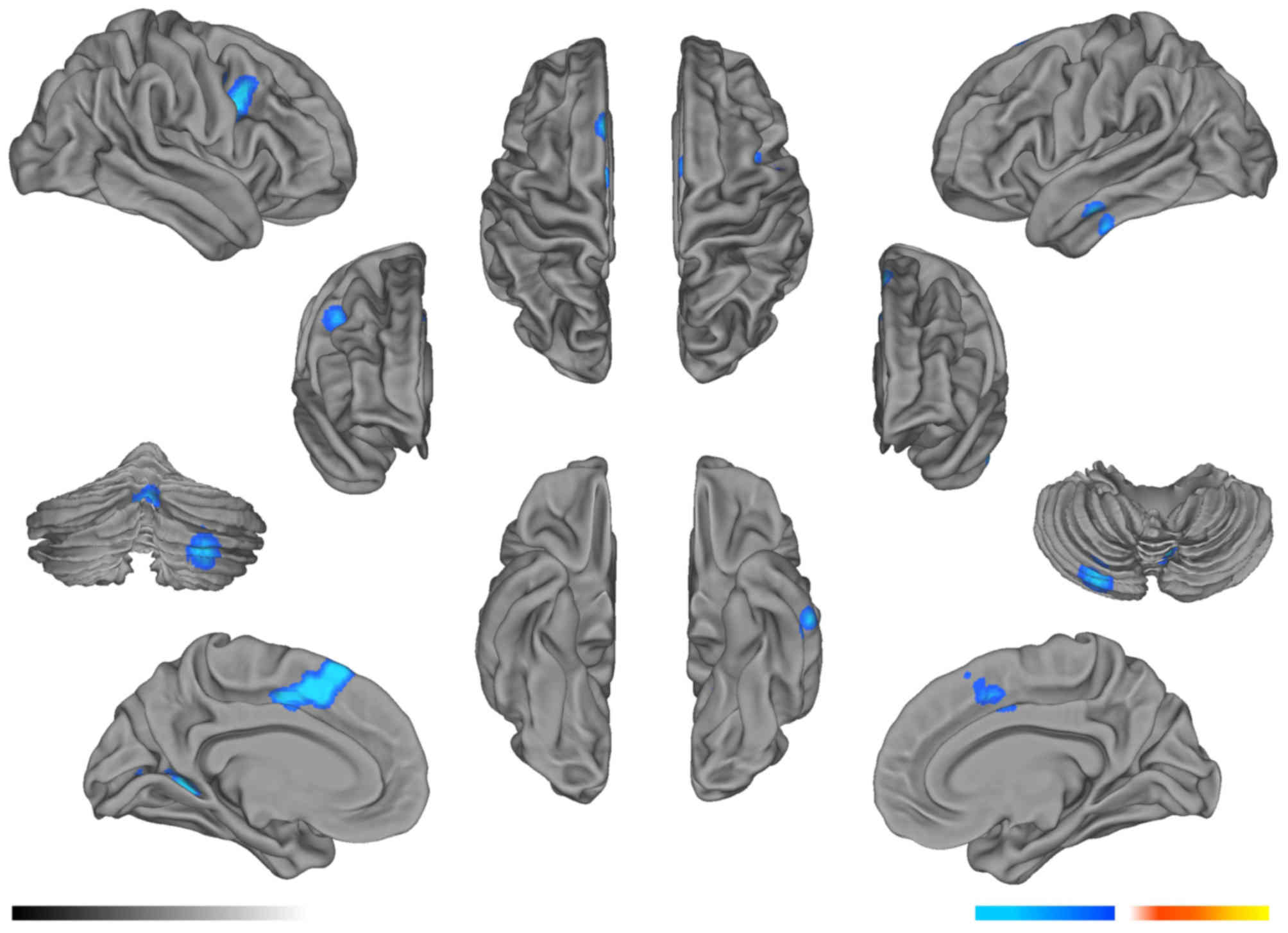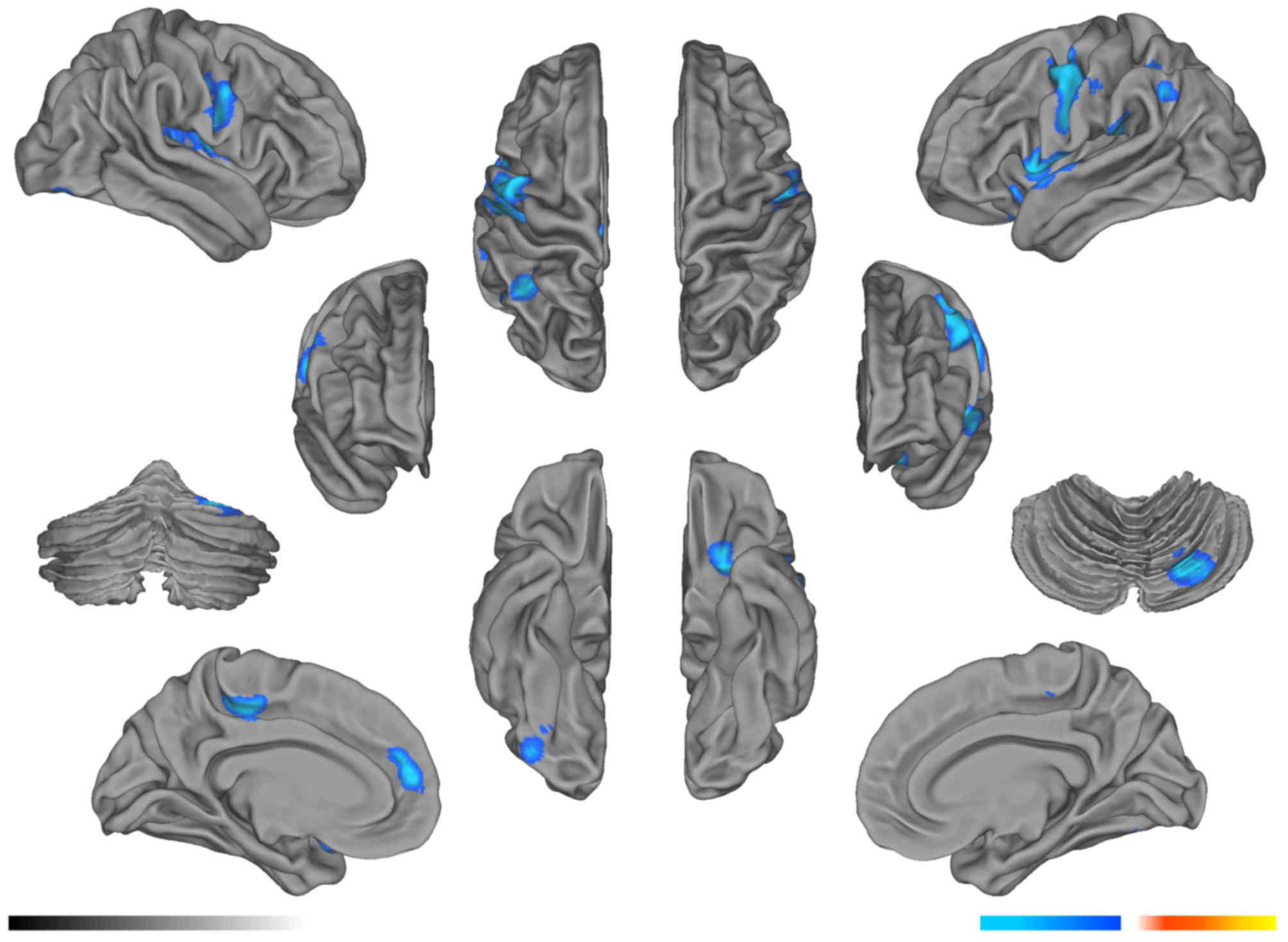|
1
|
Shanmugaratnam K, Chan SH, de-Thé G, Goh
JE, Khor TH, Simons MJ and Tye CY: Histopathology of nasopharyngeal
carcinoma: Correlations with epidemiology, survival rates and other
biological characteristics. Cancer. 44:1029–1044. 1979. View Article : Google Scholar : PubMed/NCBI
|
|
2
|
Sun Y, Zhou GQ, Qi ZY, Zhang L, Huang SM,
Liu LZ, Li L, Lin AH and Ma J: Radiation-induced temporal lobe
injury after intensity modulated radiotherapy in nasopharyngeal
carcinoma patients: A dose-volume-outcome analysis. BMC Cancer.
13:3972013. View Article : Google Scholar : PubMed/NCBI
|
|
3
|
Lee AW, Law SC, Ng SH, Chan DK, Poon YF,
Foo W, Tung SY, Cheung FK and Ho JH: Retrospective analysis of
nasopharyngeal carcinoma treated during 1976–1985: Late
complications following megavoltage irradiation. Br J Radiol.
65:918–928. 1992. View Article : Google Scholar : PubMed/NCBI
|
|
4
|
Tang Y, Luo D, Rong X, Rong X, Shi X and
Peng Y: Psychological disorders, cognitive dysfunction and quality
of life in nasopharyngeal carcinoma patients with radiation-induced
brain injury. PLoS One. 7:e365292012. View Article : Google Scholar : PubMed/NCBI
|
|
5
|
Glantz MJ, Burger PC, Friedman AH, Radtke
RA, Massey EW and Schold SC Jr: Treatment of radiation-induced
nervous system injury with heparin and warfarin. Neurology.
44:2020–2027. 1994. View Article : Google Scholar : PubMed/NCBI
|
|
6
|
Wang HZ, Qiu SJ, Lv XF, Wang YY, Liang Y,
Xiong WF and Ouyang ZB: Diffusion tensor imaging and 1H-MRS study
on radiation-induced brain injury after nasopharyngeal carcinoma
radiotherapy. Clin Radiol. 67:340–345. 2012. View Article : Google Scholar : PubMed/NCBI
|
|
7
|
Xiong WF, Qiu SJ, Wang HZ and Lv XF: 1H-MR
spectroscopy and diffusion tensor imaging of normal-appearing
temporal white matter in patients with nasopharyngeal carcinoma
after irradiation: Initial experience. J Magn Reson Imaging.
37:101–108. 2013. View Article : Google Scholar : PubMed/NCBI
|
|
8
|
Nelles M, Block W, Träber F, Wüllner U,
Schild HH and Urbach H: Combined 3T diffusion tensor tractography
and 1H-MR spectroscopy in motor neuron disease. AJNR Am J
Neuroradiol. 29:1708–1714. 2008. View Article : Google Scholar : PubMed/NCBI
|
|
9
|
Yokoyama K, Matsuki M, Shimano H, Sumioka
S, Ikenaga T, Hanabusa K, Yasuda S, Inoue H, Watanabe T, Miyashita
M, et al: Diffusion tensor imaging in chronic subdural hematoma:
Correlation between clinical signs and fractional anisotropy in the
pyramidal tract. AJNR Am J Neuroradiol. 29:1159–1163. 2008.
View Article : Google Scholar : PubMed/NCBI
|
|
10
|
Zhuang L, Wen W, Zhu W, Trollor J, Kochan
N, Crawford J, Reppermund S, Brodaty H and Sachdev P: White matter
integrity in mild cognitive impairment: A tract-based spatial
statistics study. Neuroimage. 53:16–25. 2010. View Article : Google Scholar : PubMed/NCBI
|
|
11
|
Chan YL, Leung SF, King AD, Choi PH and
Metreweli C: Late radiation injury to the temporal lobes:
Morphologic evaluation at MR imaging. Radiology. 213:800–807. 1999.
View Article : Google Scholar : PubMed/NCBI
|
|
12
|
Norris AM, Carrington BM and Slevin NJ:
Late radiation change in the CNS: MR imaging following gadolinium
enhancement. Clin Radiol. 52:356–362. 1997. View Article : Google Scholar : PubMed/NCBI
|
|
13
|
Lv XF, Zheng XL, Zhang WD, Liu LZ, Zhang
YM, Chen MY and Li L: Radiation-induced changes in normal-appearing
gray matter in patients with nasopharyngeal carcinoma: A magnetic
resonance imaging voxel-based morphometry study. Neuroradiology.
56:423–430. 2014. View Article : Google Scholar : PubMed/NCBI
|
|
14
|
Smith SM, Jenkinson M, Johansen-Berg H,
Rueckert D, Nichols TE, Mackay CE, Watkins KE, Ciccarelli O, Cader
MZ, Matthews PM and Behrens TE: Tract-based spatial statistics:
Voxelwise analysis of multi-subject diffusion data. Neuroimage.
31:1487–1505. 2006. View Article : Google Scholar : PubMed/NCBI
|
|
15
|
Smith SM and Nichols TE: Threshold-free
cluster enhancement: Addressing problems of smoothing, threshold
dependence and localisation in cluster inference. Neuroimage.
44:83–98. 2009. View Article : Google Scholar : PubMed/NCBI
|
|
16
|
Valk PE and Dillon WP: Radiation injury of
the brain. AJNR Am J Neuroradiol. 12:45–62. 1991.PubMed/NCBI
|
|
17
|
Chong VF, Fan YF and Mukherji SK:
Radiation-induced temporal lobe changes: CT and MR imaging
characteristics. AJR Am J Roentgenol. 175:431–436. 2000. View Article : Google Scholar : PubMed/NCBI
|
|
18
|
Makki MI, Chugani DC, Janisse J and
Chugani HT: Characteristics of abnormal diffusivity in
normal-appearing white matter investigated with diffusion tensor MR
imaging in tuberous sclerosis complex. AJNR Am J Neuroradiol.
28:1662–1667. 2007. View Article : Google Scholar : PubMed/NCBI
|
|
19
|
Kitahara S, Nakasu S, Murata K, Sho K and
Ito R: Evaluation of treatment induced cerebral white matter injury
by using diffusion-tensor MR imaging: Initial experience. AJNR Am J
Neuroradiol. 26:2200–2206. 2005.PubMed/NCBI
|
|
20
|
Russo C, Fischbein N, Grant E and Prados
MD: Late radiation injury following hyperfractionated craniospinal
radiotherapy for primitive neuroectodermal tumor. Int J Radiat
Oncol Biol Phys. 44:85–90. 1999. View Article : Google Scholar : PubMed/NCBI
|
|
21
|
Xavier S, Piek E, Fujii M, Javelaud D,
Mauviel A, Flanders KC, Samuni AM, Felici A, Reiss M, Yarkoni S, et
al: Amelioration of radiation-induced fibrosis: Inhibition of
transforming growth factor-beta signaling by halofuginone. J Biol
Chem. 279:15167–15176. 2004. View Article : Google Scholar : PubMed/NCBI
|
|
22
|
Kim SH, Lim DJ, Chung YG, Cho TH, Lim SJ,
Kim WJ and Suh JK: Expression of TNF-alpha and TGF-beta 1 in the
rat brain after a single high-dose irradiation. J Korean Med Sci.
17:242–248. 2002. View Article : Google Scholar : PubMed/NCBI
|
|
23
|
Parkin AJ and Hunkin NM: Memory loss
following radiotherapy for nasal pharyngeal carcinoma-an unusual
presentation of amnesia. Br J Clin Psychol. 30:349–357. 1991.
View Article : Google Scholar : PubMed/NCBI
|
|
24
|
Cheung M, Chan AS, Law SC, Chan JH and Tse
VK: Cognitive function of patients with nasopharyngeal carcinoma
with and without temporal lobe radionecrosis. Arch Neurol.
57:1347–1352. 2000. View Article : Google Scholar : PubMed/NCBI
|
|
25
|
Özdemir Hİ, Eker MÇ, Zengin B, Yilmaz DA,
İşman Haznedaroğlu D, Çınar C, Kitiş Ö, Akay A and Gönül AS: Gray
matter changes in patients with deficit schizophrenia and
non-deficit schizophrenia. Turk Psikiyatri Derq. 23:237–246.
2012.
|
|
26
|
Lai CH: Gray matter volume in major
depressive disorder: A meta-analysis of voxel-based morphometry
studies. Psychiatry Res. 211:37–46. 2013. View Article : Google Scholar : PubMed/NCBI
|
|
27
|
Schmidt-Wilcke T, Leinisch E, Straube A,
Kämpfe N, Draganski B, Diener HC, Bogdahn U and May A: Gray matter
decrease in patients with chronic tension type headache. Neurology.
65:1483–1486. 2005. View Article : Google Scholar : PubMed/NCBI
|
|
28
|
Shi L, Adams MM, Long A, Carter CC,
Bennett C, Sonntag WE, Nicolle MM, Robbins M, D'Agostino R and
Brunso-Bechtold JK: Spatial learning and memory deficits after
whole-brain irradiation are associated with changes in NMDA
receptor subunits in the hippocampus. Radiat Res. 166:892–899.
2006. View
Article : Google Scholar : PubMed/NCBI
|
|
29
|
Tofilon PJ and Fike JR: The radioresponse
of the central nervous system: A dynamic process. Radiat Res.
153:357–370. 2000. View Article : Google Scholar : PubMed/NCBI
|
|
30
|
Gazdzinski LM, Cormier K, Lu FG, Lerch JP,
Wong CS and Nieman BJ: Radiation-induced alterations in mouse brain
development characterized by magnetic resonance imaging. Int J
Radiat Oncol Biol Phys. 84:e631–e638. 2012. View Article : Google Scholar : PubMed/NCBI
|
|
31
|
McDonald BC, Conroy SK, Ahles TA, West JD
and Saykin AJ: Gray matter reduction associated with systemic
chemotherapy for breast cancer: A prospective MRI study. Breast
Cancer Res Treat. 123:819–828. 2010. View Article : Google Scholar : PubMed/NCBI
|















